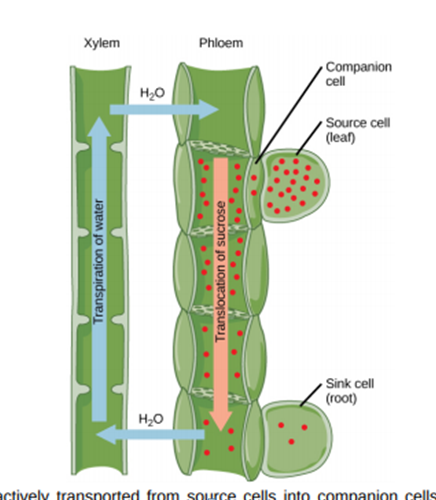H. influenzae can be distinguished from H. aegyptius by its _____ test for _____
a. negative; sucrose fermentation
b. negative; lactose fermentation
c. positive; catalase
d. positive; xylose fermentation
D
H. influenzae and H. aegyptius are biochemically quite similar; however, H. influenzae is positive for xylose fermentation, whereas H. aegyptius is negative. H. influenzae is also nonhemolytic on rabbit blood, and H. aegyptius is <-hemolytic.
You might also like to view...
In a normal fruit fly, the second thoracic segment has wings and the third thoracic segment has halteres (small knobbed structures that act as a balance and guidance system). A mutant fruit fly is identified in which the third thoracic segment produces wings instead of halteres. This abnormal fly has a mutation in which of the following?
A. a maternal effect gene B. a gap gene C. a homeotic gene D. a segment polarity gene
Referring to the illustration as a guide, if you were to put a stalk of celery into a mixture of water and food coloring, in which tissue would you expect to see the food coloring show later?

a. phloem
b. both xylem and phloem
c. xylem
d. none of these
What would happen if your SA node and AV node fired at same time?
A. The QRS wave on an ECG would disappear, as it would be masked by the P wave. B. Your blood pressure would increase. C. The production of nitric oxide by your endothelial cells would increase. D. Blood would be forced back into the atria from the ventricles. E. Your stroke volume would decrease. Clarify Question What is the key concept addressed by the question? What type of thinking is required? Gather Content What do you already know about the SA and AV nodes? What other information is related to the question? Choose Answer Given what you now know, what information is most likely to produce the correct answer? Reflect on Process Did your problem-solving process lead you to the correct answer? If not, where did the process break down or lead you astray? How can you revise your approach to produce a more desirable result?
In the decolorizing step of the Gram stain, which reagent is used?
a. Alcohol-acetone b. Malachite green c. Iodine d. Crystal violet